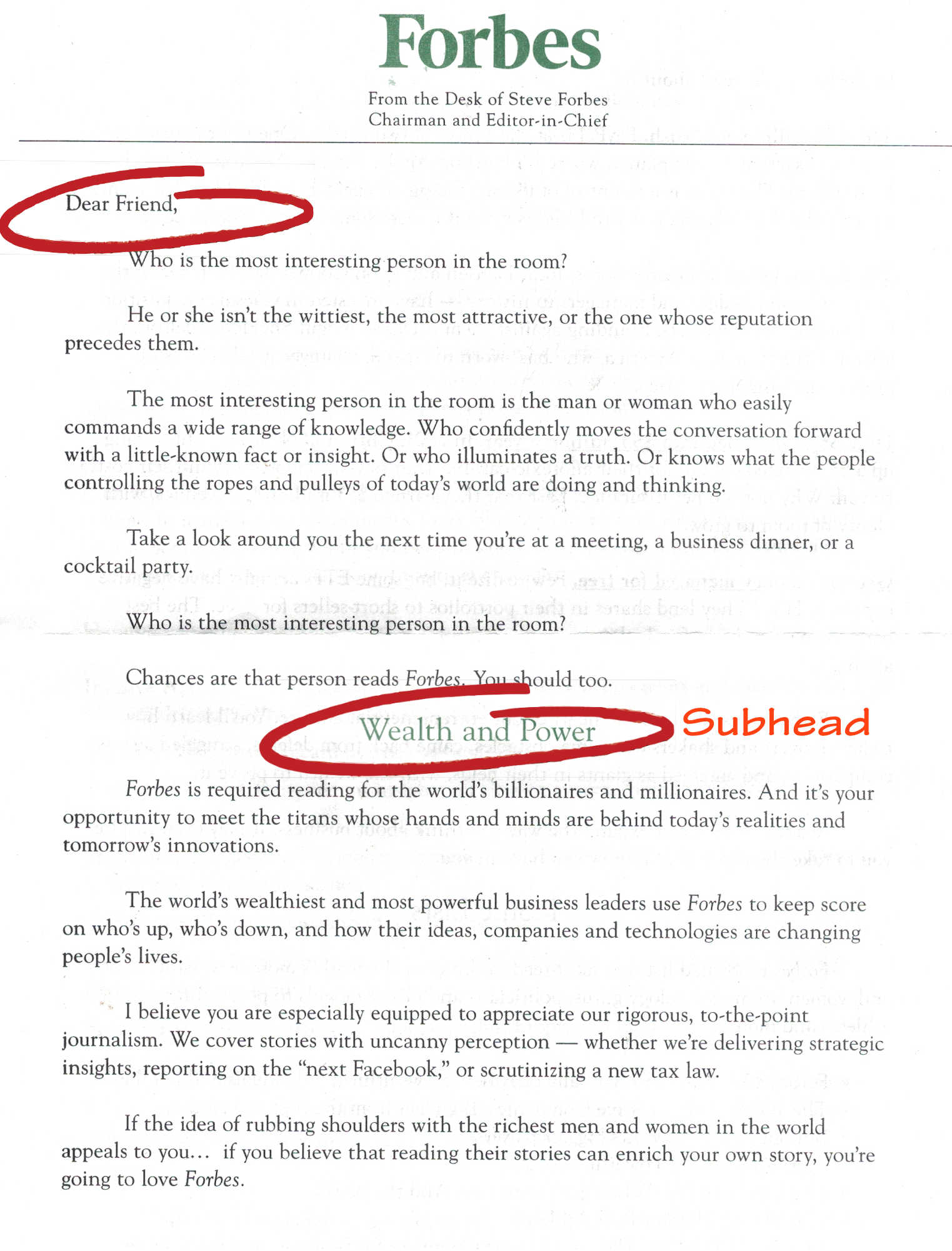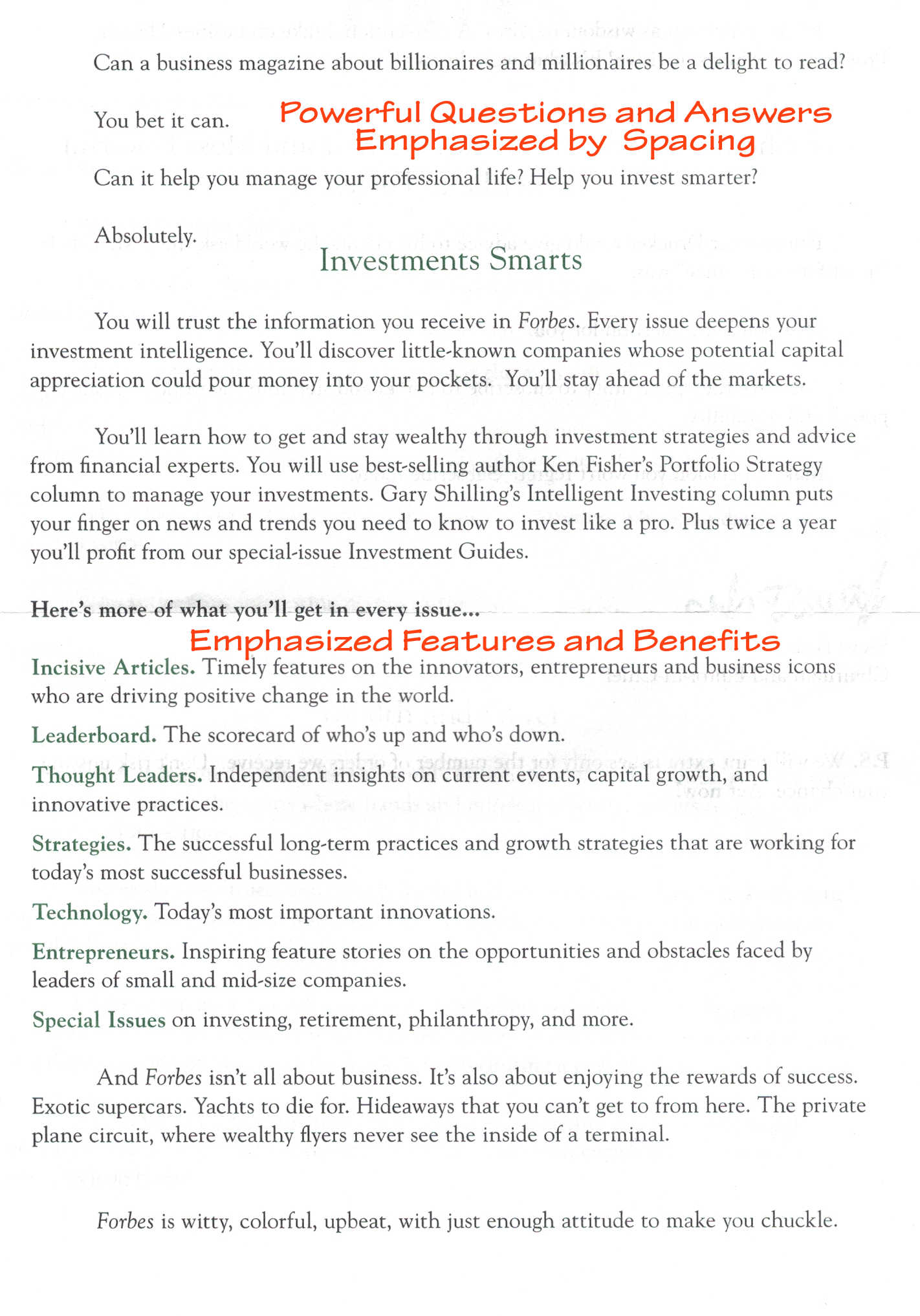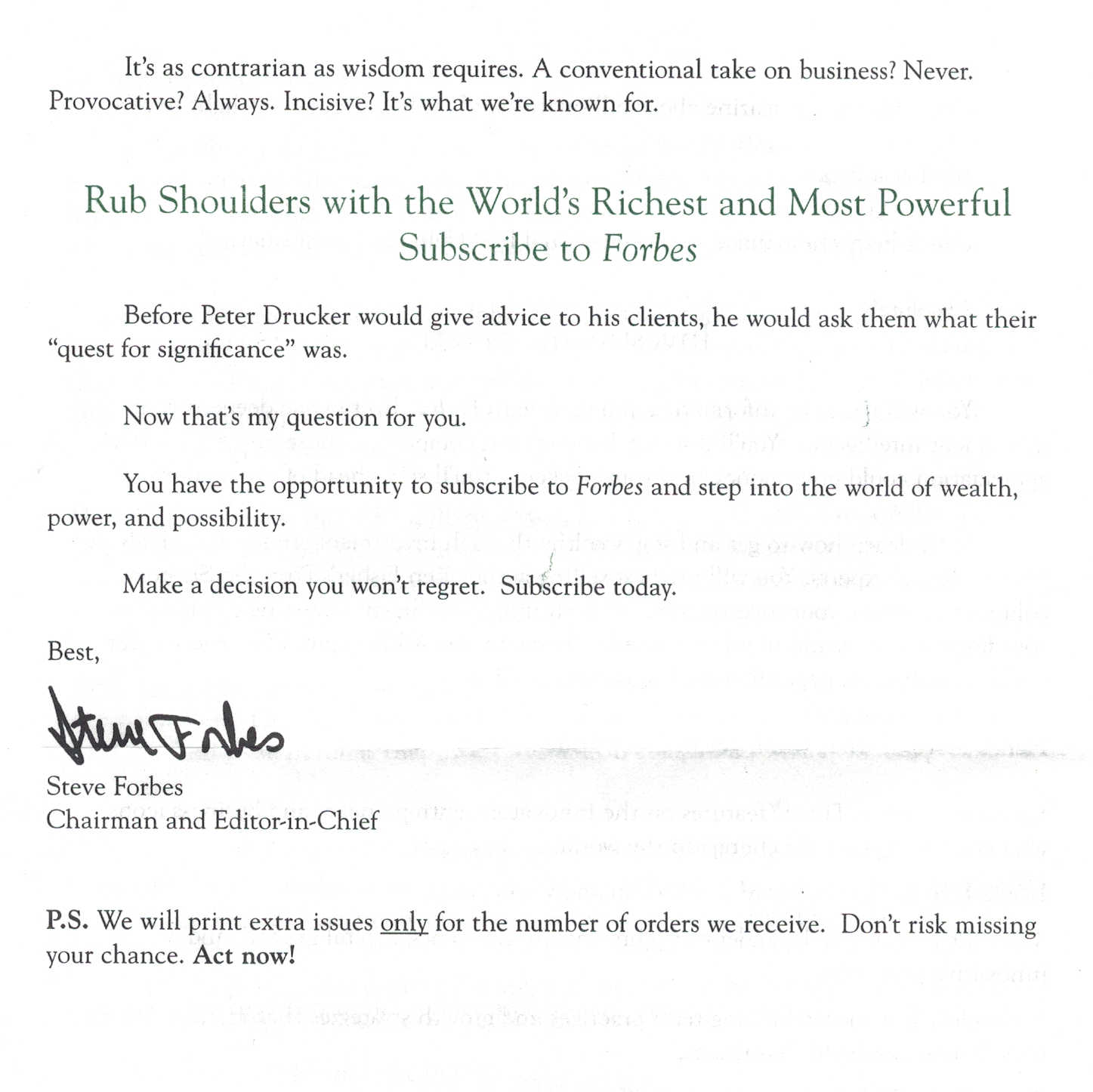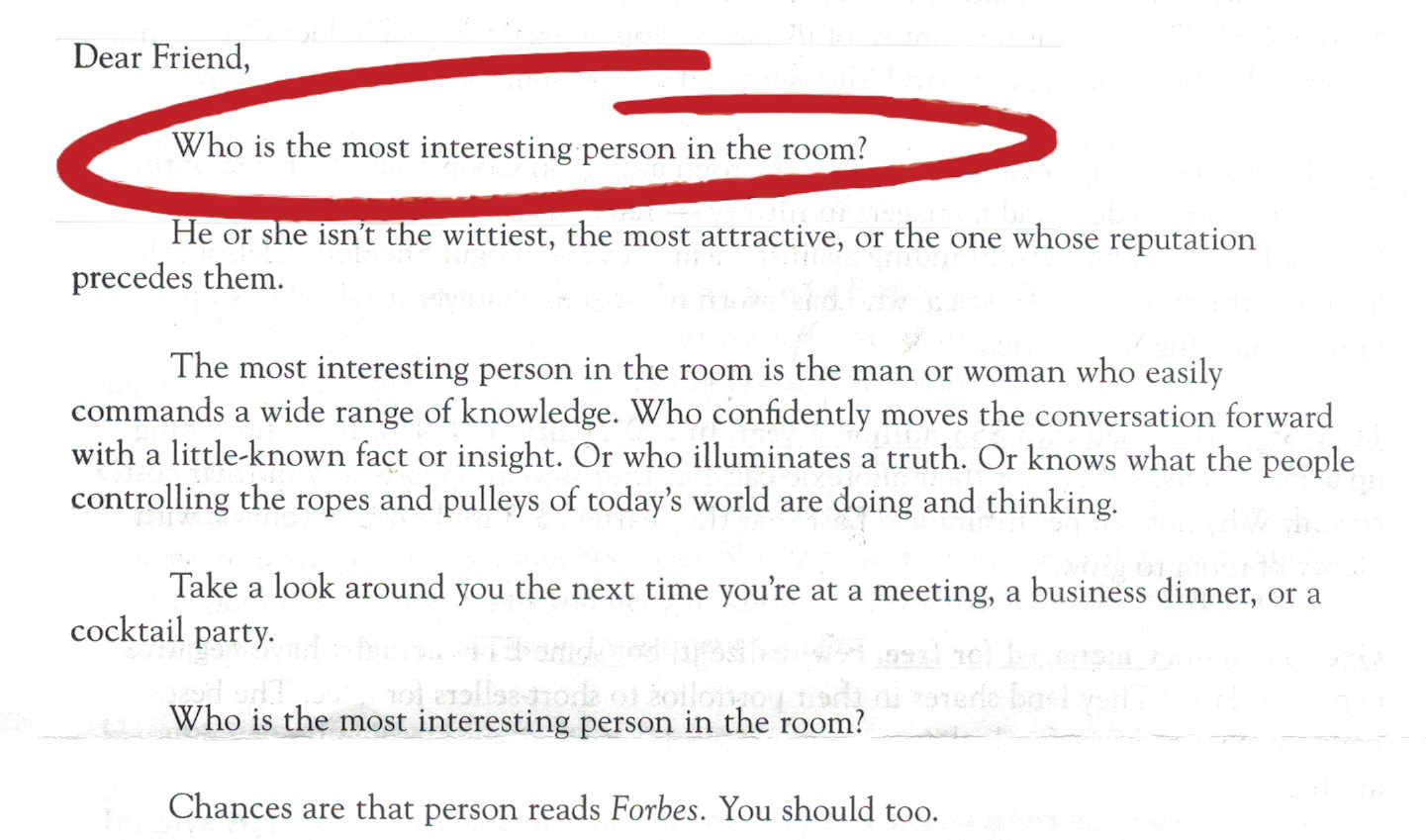If you are trying to learn how to write good advertising copy or blog posts, a great way to learn how they are structured and understand why they work is by studying pieces that you know have been successful.
Almost every good writer keeps, maintains, and builds a file of successful ads and copy and if you are serious about your writing, you’ll keep one too.
These types of collections of files are what are known as swipe files. In case you’re unfamiliar with them, a swipe file is a collection of ads, blog posts, articles, and other successful pieces that you have collected from other successful writers that you maintain and use as guides and ideas.
If you’re a writer of advertising copy, you’ll probably keep groups of these files as a reference for different types of ads you’ll be writing.
For example, if you are going to write an ad for a company that’s trying to sell aluminum boats, then you should collect and categorize ads from magazines and webpages that have aluminum boats in them.
The beauty of collecting these ads is they usually have been written by other successful copywriters.
If the ads are from high-quality magazines or direct mail campaigns, then chances are they have been written by a copywriter that is very experienced.
Where Can I Collect Swipe Files From?
The good thing about building a decent swipe file collection is that you can do so for free. It doesn’t matter if you collect sales pages off of the Internet, or collect ads that are sent to you in the mail, usually, you can get them for nothing. Sometimes you can find copywriters online that have either curated other copywriter’s work or their own; some of these writers will give these big curated files out for free and some will try to sell them to you.
The bottom line is you need to start curating and collecting your own samples of writing so you’ll have a valuable resource at your fingertips.
More Uses for Swipe Files
You can also use swipe files to study how advertising copy works and use it to learn how to write your own as well. In the same way, an art student will copy paintings and drawings by the masters, so will students of advertising copy; it has been standard practice for copywriter wannabes to write out proven, great copy by longhand. Not only will they do this by printing it out by hand, but they will also analyze it and shred it to bits trying to glean as many tips and ideas as they can from it.
Dissecting a Swiped Sales Letter
Several days ago, I received a wonderful letter from Mr. Steven Forbes, who just happened to be the Chairman and Editor of Forbes Magazine.
I was really blown away by the fact that he thought of me enough to send me a rather nice, friendly letter. Even though I can’t remember ever meeting Mr. Forbes, I must have made a really good impression on him because as you can see in Exhibit 1, he referred to me as “Dear Friend”.

There’s more to a Greeting than Meets the Eye
Usually, when you write an intro to a sales letter, you’ll want to get your greeting as close to the person you’re addressing as possible. The best salutation is to start the letter with the person’s name. So in this case, “Dear Elmo,” would be the absolute best situation.
However, if you didn’t know the person’s name and were writing a sales letter to a generic list of first time home buyers, you’d greet the reader with, “Dear Future Home Owner”. Or if you were selling an info-product that taught people how to start an online business, you’d address the letter “Dear Budding Entrepreneur”.
Any way that you can get your letter to sound more personable as if it was addressed to the actual person, do it.
Another reason this is very important is that it qualifies the sale. Forbes Magazine doesn’t want to address every person on the planet, because they know that’s a mere pipe dream. (Yeah, it would be great if EVERYONE wanted your widget, but that’s not going to happen.)
Yes, you want to get rid of some people. You want to quickly eliminate the folks that have absolutely no interest in what you have to say or your product. If you’re a college kid that has never thought of investing money or has any interest in it, then you’ll want that type of person to move on. However, if you are a 33-year old that wants to someday build a business or an investment portfolio, then this letter will probably be for you.
If you or your company has done their market research, they will know which type of person wants their product or service, and they have mailing lists that correspond to those audiences.
Step 1 – Study the Salutation
As I have just told you, take a good look at the salutation and see how it is addressed.
Usually, most sales letters whether they are written online or offline have a headline that nails down the main benefit of the product or service they are pushing. However, in this case, the copywriter has decided to use a different format, one that makes the ad look as much like a letter as possible.
Many times when people see a pre-headline, a headline and a sub-headline (all together, these elements are referred to as “deck copy”) people tend to immediately think of it as a sales piece.
However, well-established companies like an investment, automobile, and beer companies, just to name a few, have massive budgets and pay big bucks to top-drawer copywriters. Since we’re dealing with Forbes Magazine, this letter/advertisement was probably written by a rather seasoned, well-paid copywriter.
So rather than run a campaign with a letter that has the usual deck copy and hallmarks of a sales letter, Forbes decided to hire someone that could address a more sophisticated audience.
Step 2 -Take a Look at the Subheads
Subheads are mini titles that announce the different sections of the sales letter. In this case, the first subhead you see is “Wealth and Power”. There are several reasons why subheads like this are so important to a well-written sales letter.
The main reason is that they will hook the reader if the very first sentence doesn’t. Usually, you have about 3 seconds to grab the attention of your prospect, and if he isn’t interested in reading the very first sentence, he will probably scan ahead to look at the subheads. If one of the subheads happens to hook your reader, there’s a good chance he may double back and read the details of the letter.
So having great subheads that are to the point and resonate with your reader is extremely important.
Having said all of that, I would like to point out that all of the subheads may not hit a nerve with your reader, but if just one of them really does, then you can bet that he will more than likely start reading the section of the letter that interests him the most.
As I scanned the letter myself, I was very interested in at least three of the sections:
- “Wealth and Power”
- “Investment Smarts”, and
- “Rub Shoulders with the World’s Richest and Most Powerful ― Subscribe to Forbes”.
- “Iconic Lists” didn’t interest me too much, but it did make me curious enough to take a look at what it meant.
Another Important Function of Subheads
The second big function of subheads is to spur readers on to read the next section as they go through the sales letter. The famous marketer and copywriter, Claude Hopkins, had an interesting way of looking at subheads. He thought of them as electric power substations that generated energy to push you on to the next section of the letter. So, as you are reading through the section that you are interested the most in, you’ll get to the next exciting subhead that will make you want to read that part. See how that works?
My favorite subhead in this letter is the last one, “Rub Shoulders with the World’s Richest and Most Powerful ― Subscribe to Forbes”. Man, what up and coming investor, business person or entrepreneur wouldn’t be interested in that? It is the most powerful and long subhead in this piece and it comes right before the call to action.
Step 3 – Look at How the Letter is formatted
When sales copy of this magnitude is written, you can bet that every possible angle has been explored, and every facet of the piece has been taken into consideration.
The fonts, color of the subheads, the spacing of the sentences and mini paragraphs, bullet points, underlined sentences and words, italicized words, and bold lettering have all been carefully thought out and planned for maximum response. (Please see Exhibits 1-4.)
These elements all work together to keep the reader interested and to lead him to the call of action to subscribe to Forbes Magazine.
Another aspect of the formatting is the size of the paragraphs. On average, these blog posts are about two sentences long and at the largest, are four sentences. That’s because when the average person reads a blog post or a sales letter, they get tired immediately if they see a big block of words.
So, in order to make the sales copy more readable copywriters will try to write short, punchy sentences while keeping varying the size of the paragraphs. Very short sections are much easier to read and if written correctly, will add a certain emphasis to the message.



Step 4 – Analyze the Content
Once you’ve taken a good look at the sales letter’s format and other features, you need to look at how the content works to get the prospect to finally take action.
Before this letter was even thought of, there was a lot of market research performed before the first word was drafted. Most good copywriters will tell you that the research phase of writing a sales letter is where most of the real work is done.
You have to understand the market and especially the ideal prospect that you’re writing the ad copy for. The more you can find out about the person you are writing to the more successful your campaign will be.
The famous copywriter and marketing expert, Dan Kennedy, in his book The Ultimate Sales Letter states, “I use techniques like “Theater In Your Mind” to visualize my letter’s recipients as living, breathing, thinking, feeling, walking, talking human beings.”(21)
Mr. Kennedy tries to visualize his prospects as they go through their entire day, as well as trying to figure out every frustration, preoccupation, insecurity, and trends that affect their lives.
Drilling Down to the Core
The reason why this is so important is that this is where you will develop your overriding idea and the main focus of your letter, otherwise known as your “Core”.
The Core is the main idea, the big focus, that thing your prospect desires and lusts after more than anything else.
Let’s take a simple example from real life and break it down so it will be easy to understand. In one of Dan Kennedy’s sales letters, he had a client that had sold tarps for the backs of big trucks. These tarps were important because they had to keep the material the trucks were carrying in the back of the truck so that none of it would bounce out and damage other people’s vehicles on the highway.
Mr. Kennedy went to, and interviewed loads of clients that had previously bought the tarps. (He got the list of the previous customers that had bought the tarps from the manufacturer that he was writing the sales letter for.)
Since these previous customers of the tarps had already purchased and liked the product, it was easy for Mr. Kennedy to approach and interview them. As a matter of fact, he hung out with some of them to see what they did during the day so he could fully understand what prospects in this market were like. Once he had interviewed, watched, and hung out with these prospects, he had an excellent idea of what their main motivation or Core was for the tarps his client was trying to sell.
Now, let’s take a look at our sales letter from the very beginning again in Exhibit 5.

The Core of the Forbes Letter
Since this letter doesn’t have the usual deck copy that most do, it has to grab your attention and hold it from the very first sentence on the page which is where you are going to find the Core.
Actually, the Core is explained in the entire first section of the letter. In this case, the writer has focused on the prestige and power it takes to be the most interesting person in the room.
The Core is focused on the prospect that wants to be the Big Kahuna, the Dos Equis “Most Interesting Man in the World”, the Ogilvy “Man in the Hathaway Shirt”, the “Go to Guy of the Business World” type of maverick that other business types will gravitate to when they want to know something important.
Using storytelling imagery, the writer has skillfully handed you the main reason why you’d want to read Forbes Magazine without you consciously realizing it.
Getting into the Big Benefit
Assurance is the next important piece of this sales letter, and you can sum it up this as being the major benefit of Forbes magazine. Once the writer has established the fact that you’ll want to be seen as the “most interesting person in the room” he’ll now show you what the main benefit of moving in this direction, which is “Wealth and Power”.
You’ll notice that this is the first subhead printed in large, green letters in the center of page one. The major benefit expressed is if you are reading and digesting the same material that Bill Gates, Richard Branson, Warren Buffett, and other rich and powerful men are, you’ll have the same kind of knowledge and savvy they do.
“If the idea of rubbing shoulders with the richest men and women in the world appeals to you… if you believe that reading their stories can enrich your own story, you’re going to love Forbes.”
Even though you know that you’re not going to actually be “rubbing shoulders with the richest men and women in the world”, the imagery and assurance have been placed in your mind to think about. You’ll have the same intimate knowledge and ideas that these titans of business have, and possibly achieve your own greatness.
If you have any doubt that this is the main benefit, just go to the last sentence of the first section (right before “Iconic Lists”).
“Reading Forbes can expand the way you think about business. It may even inspire you to take the big step you know you have in you.”
I’ve deliberately underlined the last part of the last sentence. What this is saying is that you already have the mogul material inside of you; you just need our magazine to bring it out.
This is a great example of a well written and thought out the main benefit, wouldn’t you agree?
Focusing in on the Picture
Imagery is a massively important element of any type of advertising. If you don’t believe me, look at a few of these facts about TV commercials from 2016:
- The average Super Bowl ad cost over $3 Million Dollars to produce and 30 seconds in length
- The average length of a TV commercial is just over 30 seconds
- Ice cubes in beverage commercials are made out of acrylic because they look better and last longer; the fizz is generated by detergent
- Most food in commercials is inedible. Shoe polish is sometimes used on meat to make the texture and color more vibrant
- The average 30-second radio commercial has about 85 words in it; the average TV commercial has 45
- Commercials, on average, change a camera angle or scene 20 times during a 30-second spot
Of course, this is just skimming the surface, but considering that most big-time corporate commercials are usually driven by pictures, you can obviously see the importance of it in making a sale. Whether it’s in TV spots, radio ads, or printed ad copy, the ability to sell using images is extremely important.
The initial scene painted in the first eight sentences of the Forbes letter is of a confident, highly intelligent, and savvy business person moving skillfully thorough a party or meeting of high-end business people. Once again I’d like to emphasize the fact that the writer used only a mere eight sentences to convey this initial image.
It would also be good to note that the image of “rubbing shoulders with the richest men and women in the world” is in the sales letter twice. The second time occurs right before the call to action at the end of the letter in big, bold, green letters. (It’s always a good idea to reiterate the main benefit or benefits right before the call to action.)
So you can see that painting pictures with words throughout the piece were employed and also skillfully used to reinforce the main benefit (Assurance) and the Core idea.

